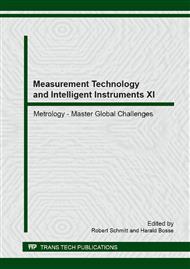p.185
p.193
p.200
p.204
p.213
p.219
p.228
p.239
p.244
Evaluation of the Transient Temperature Distribution of End-Face Sliding Friction Pair Using Infrared Thermometry
Abstract:
A real-time temperature measurement system was designed for end-face sliding friction pairs with an infrared (IR) probe and IR thermography installed on it. The approximate temperature of contact surface was measured by the probe while non-contact surface’s temperature distribution was determined with the IR thermography. Two experiments with constant load but varied rotational speeds were carried out, and a preliminary study was made to analyze the variation of temperature in the friction process. Furthermore, the probe data was used as thermal load to calculate the temperature field by the FEM model and the result was verified using IR images. The experimental results showed that the infrared measurement system can detect and record the interface-temperature variation accurately. The probe data showed a good dynamic performance with the variation of friction coefficient. In addition, the calculated temperature field showed good accordance with the IR thermography data.
Info:
Periodical:
Pages:
213-218
Citation:
Online since:
May 2014
Authors:
Price:
Сopyright:
© 2014 Trans Tech Publications Ltd. All Rights Reserved
Share:
Citation:


